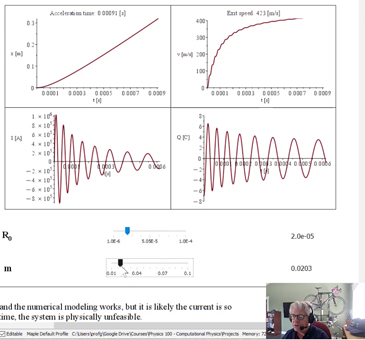User Case Study:
Revolutionizing Introductory Physics with Maple at Scripps and Pitzer Colleges







Physics courses at the undergraduate level involve complex mathematical computations that can overshadow the understanding of physics principles. In a transformative initiative at Scripps and Pitzer Colleges, Professor Scot Gould led the integration of Maple, advanced math software developed by Maplesoft, into an experimental first-semester undergraduate physics course. The goal was to incorporate a tool that simplifies these computations while enhancing students' grasp of physics concepts.
Why Maple?
Maple was carefully chosen for this initiative because of several key features:
Maple has revolutionized the way we approach physics education at Scripps and Pitzer Colleges,”
How Maple is Integrated into the Course
Initially, Maple was taught during class time, with heavy emphasis at the beginning of the semester. However, Professor Gould refined the approach over time, leading to more effective integration:
By the end of the course, it becomes the norm for students to employ Maple to enter and manipulate fundamental equations when solving physics problems. The consensus among students is that Maple allows them to focus more on understanding physics principles while spending less time on the mathematical minutiae that can often bog down such courses.
“Maple has revolutionized the way we approach physics education at Scripps and Pitzer Colleges,” said Professor Gould. “It empowers our students to delve deeper into the core concepts of physics. As an educator, my primary goal is to facilitate meaningful learning experiences, and Maple has been instrumental in achieving this. It has redefined how our students engage with and comprehend physics by offering them unprecedented opportunities for exploration, visualization, and understanding.”
The integration of Maple into university-level physics courses at Scripps College and Pitzer College, spearheaded by Professor Scot Gould, exemplifies the power of technology in enhancing STEM education. As these institutions continue to lead the way in innovative technical education, Maple remains a vital tool in shaping the next generation of physicists and STEM practitioners.
 Contact Maplesoft to learn how Maple can be used in your classroom.
Contact Maplesoft to learn how Maple can be used in your classroom.